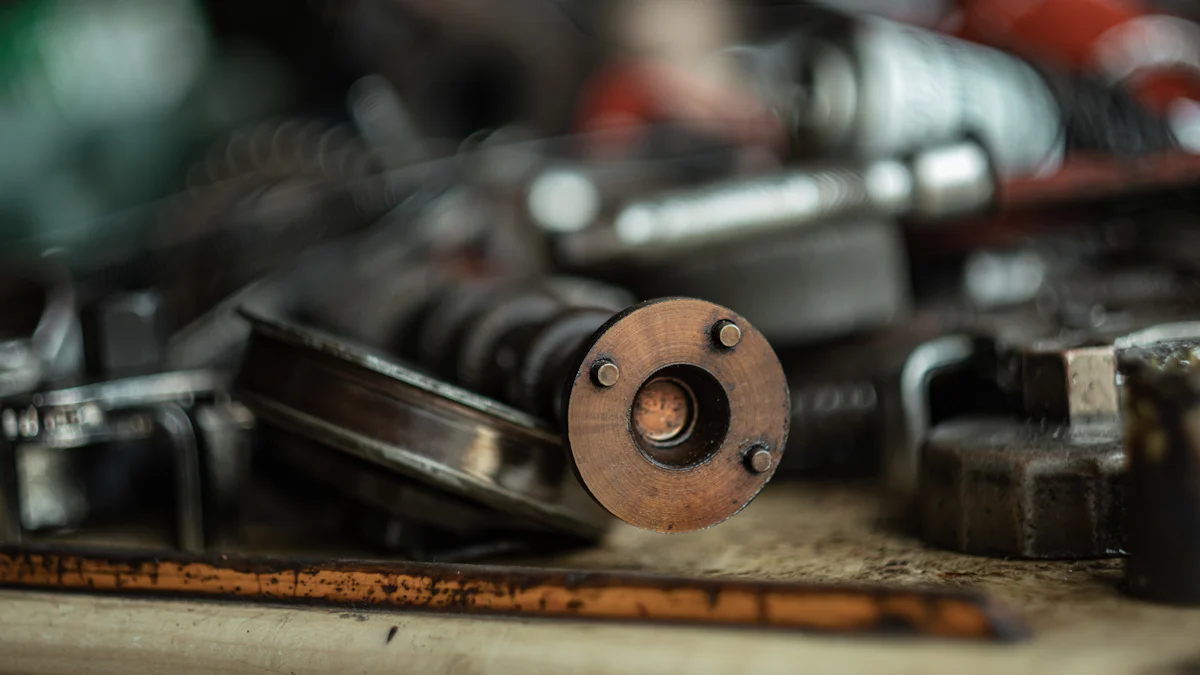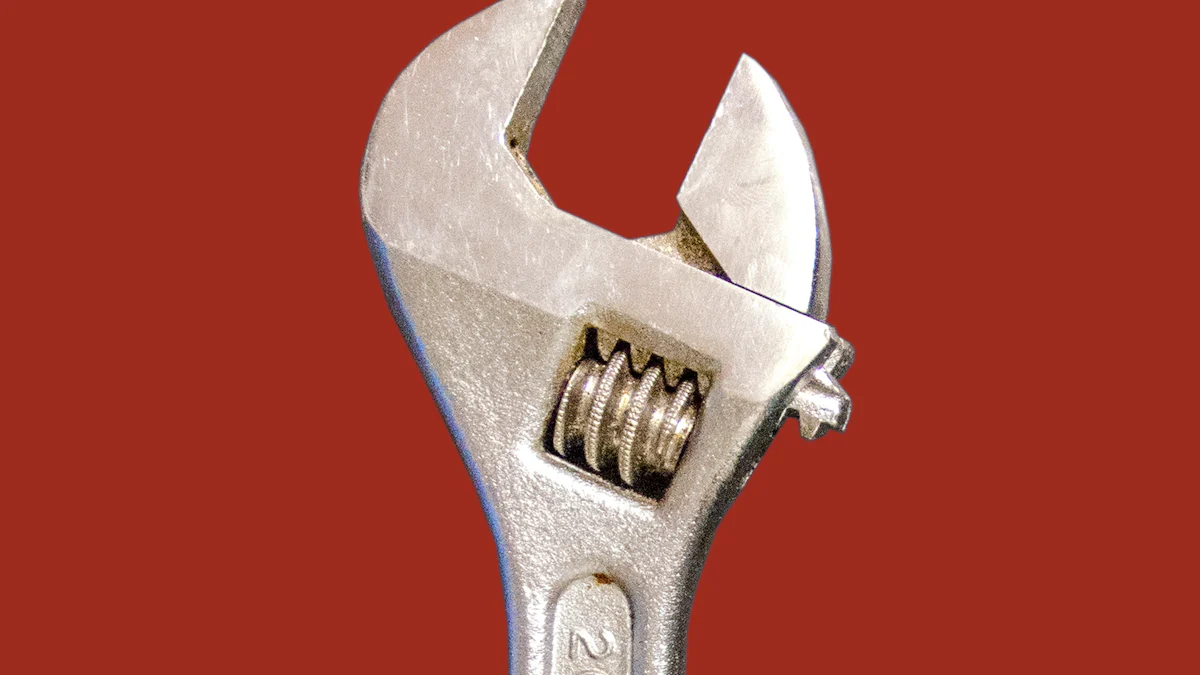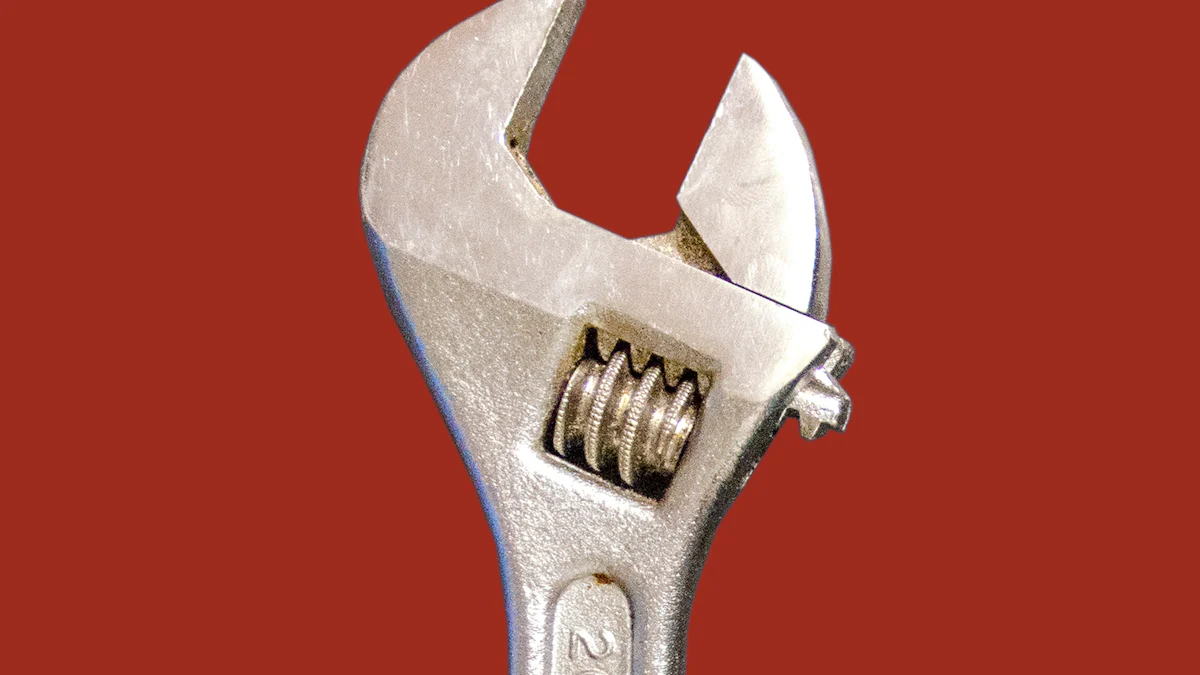
Gland nut spanners play a crucial role in maintaining hydraulic systems. These tools ensure the proper tightening and loosening of gland nuts on machinery, preventing damage to components. Various types of gland nut spanners exist, each designed for specific applications and sizes. This blog will delve into the different types of gland nut spanners, providing detailed information on their usage, applicable glands, and size determination.
Adjustable Gland Nut Spanners

Description
Design and Features
Adjustable gland nut spanners offer versatility in hydraulic maintenance. These tools feature adjustable jaws that fit a range of gland nut sizes. The Rhino Wrench Gland Nut Tool exemplifies this design with its adjustable jaws and different-sized pins. This tool ensures precise manipulation without damaging the nut or surrounding components. The large adjustable wrench has a 0.75″ drive and a range of 2″ to 6″. The small universal wrench has a 0.5″ drive and an adjustable range of 1″ to 3.75″.
Materials Used
Manufacturers often use professional-grade carbon steel for these spanners. This material provides durability and strength. A rugged coating enhances the tool’s longevity. The sturdy washer in the hinging area keeps the nut wrench in shape, preventing slippage during use.
Usage
Common Applications
Adjustable gland nut spanners are essential for various industrial tasks. These tools are ideal for hydraulic cylinders on farm and construction equipment. The Head-Pin Spanner Wrench is used on glands with holes along the rim where the chrome rod extends out. This type of gland is common on machinery like Bobcat. The Adjustable Face Pin Wrench is designed for gland nuts with pin holes located on the face of the gland nut or fitting.
Advantages and Disadvantages
Advantages of adjustable gland nut spanners include versatility and ease of use. These tools can fit multiple sizes of gland nuts, reducing the need for multiple wrenches. The adjustable nature allows for precise adjustments. However, there are some disadvantages. Adjustable spanners may slip if not properly secured, potentially causing damage or injury. Fixed spanners provide a more secure fit but lack the versatility of adjustable ones.
Sizing
How to Choose the Right Size
Choosing the right size involves measuring the gland nut’s diameter. Ensure the spanner’s adjustable range matches the gland nut size. For example, the OTC Adjustable Gland Nut Wrench fits gland nuts with pin holes located on the face of the gland nut or fitting. This wrench works on both 7/32″ and 1/4″ pin holes.
Common Sizes Available
Common sizes for adjustable gland nut spanners range from 1″ to 6″. The Rhino Wrench Gland Nut Tool offers a large adjustable wrench with a range of 2″ to 6″ and a small universal wrench with a range of 1″ to 3.75″. These sizes cover most hydraulic cylinder applications.
Fixed Gland Nut Spanners
Description
Design and Features
Fixed gland nut spanners offer a robust solution for hydraulic maintenance. These tools feature a non-adjustable design, providing a secure fit for specific gland nut sizes. The Rhino Wrench Gland Nut Tool exemplifies this design with its solid construction and precise fit. Fixed spanners often include pins or hooks that engage directly with the gland nut, ensuring a firm grip during operation. This design minimizes slippage and enhances safety.
Materials Used
Manufacturers typically use high-grade alloy steel for fixed gland nut spanners. This material ensures durability and resistance to wear. A protective coating often covers the surface to prevent corrosion. The pins in these spanners are usually made from hardened steel, providing extra strength and longevity. This combination of materials ensures that the tool can withstand heavy-duty use in industrial environments.
Usage
Common Applications
Fixed gland nut spanners are essential for various industrial tasks. These tools are commonly used in hydraulic systems found in construction and agricultural machinery. The Head-Hook Spanner Wrench is ideal for glands with holes along the rim where the chrome rod extends out. This type of gland is prevalent in equipment like excavators and loaders. The Face-Pin Spanner Wrench is designed for gland nuts with pin holes located on the face of the gland nut or fitting.
Advantages and Disadvantages
Fixed gland nut spanners offer several advantages. The non-adjustable design provides a secure fit, reducing the risk of slippage. This feature enhances safety and precision during use. Fixed spanners also tend to be more durable due to their solid construction. However, there are some disadvantages. The lack of adjustability means that multiple spanners may be required to cover different gland nut sizes. This limitation can increase the number of tools needed for comprehensive hydraulic maintenance.
Sizing
How to Choose the Right Size
Selecting the right size involves measuring the diameter of the gland nut. Ensure that the fixed spanner matches the gland nut size precisely. For example, a Face-Pin Spanner Wrench should fit the specific pin hole diameter and spacing on the gland nut. Accurate measurement is crucial to ensure a secure fit and effective operation.
Common Sizes Available
Fixed gland nut spanners come in various sizes to accommodate different applications. Common sizes range from 1″ to 6″. The Rhino Wrench Gland Nut Tool offers options that cover most hydraulic cylinder applications. These sizes ensure that users can find a suitable spanner for their specific needs, providing versatility and reliability in hydraulic maintenance.
Hook Spanners

Description
Design and Features
Hook spanners, also known as hook wrenches, offer a unique design tailored for specific hydraulic applications. These tools feature a hook-shaped end that engages with the notches or holes on gland nuts. The Williams Hook Spanner exemplifies this design with an adjustable capacity range of 2″ to 4-3/4″. The hook depth measures 3/16″, providing a secure grip on the gland nut. The wrench length is 11-3/8″, ensuring adequate leverage during use. A black oxide finish enhances the tool’s durability and resistance to corrosion.
Materials Used
Manufacturers typically use high-grade alloy steel for hook spanners. This material ensures strength and longevity. The Williams Hook Spanner is made entirely in the USA, guaranteeing high manufacturing standards. A black oxide finish provides additional protection against wear and corrosion. The hook itself often features hardened steel, offering extra durability for heavy-duty applications.
Usage
Common Applications
Hook spanners are essential tools for various industrial tasks. These tools are commonly used in hydraulic systems found in construction and agricultural machinery. The hook design allows for easy engagement with gland nuts that have notches or holes along the rim. This feature makes hook spanners ideal for equipment like excavators and loaders. The Williams Hook Spanner is particularly useful for adjusting and removing gland nuts on hydraulic cylinders.
Advantages and Disadvantages
Hook spanners offer several advantages. The hook design provides a secure grip, reducing the risk of slippage. This feature enhances safety and precision during use. Hook spanners also tend to be more durable due to their solid construction. However, there are some disadvantages. The lack of adjustability means that multiple spanners may be required to cover different gland nut sizes. This limitation can increase the number of tools needed for comprehensive hydraulic maintenance.
Sizing
How to Choose the Right Size
Selecting the right size involves measuring the diameter of the gland nut. Ensure that the hook spanner matches the gland nut size precisely. For example, the Williams Hook Spanner offers an adjustable range from 2″ to 4-3/4″. Accurate measurement is crucial to ensure a secure fit and effective operation. The hook depth and wrench length should also be considered to provide adequate leverage and grip.
Common Sizes Available
Hook spanners come in various sizes to accommodate different applications. Common sizes range from 1″ to 6″. The Williams Hook Spanner covers a range of 2″ to 4-3/4″, making it suitable for most hydraulic cylinder applications. These sizes ensure that users can find a suitable spanner for their specific needs, providing versatility and reliability in hydraulic maintenance.
Pin Spanners
Description
Design and Features
Pin spanners, also known as pin wrenches, feature a unique design tailored for specific hydraulic applications. These tools include adjustable jaws with pins that fit into holes on the face or rim of gland nuts. The Eleon Direct Pin Spanner Wrench exemplifies this design with its square breaker bar slot for extreme leverage. The adjustable jaws accommodate various hole sizes, ensuring precise manipulation without damaging the gland nut. Reversible pins enhance versatility, allowing the tool to fit different gland types.
Materials Used
Manufacturers typically use high-grade alloy steel for pin spanners. This material ensures strength and durability. The Eleon Direct Pin Spanner Wrench features a secure design to prevent pin loss during operation. A protective coating often covers the surface, providing resistance to wear and corrosion. Hardened steel pins add extra durability, making the tool suitable for heavy-duty applications.
Usage
Common Applications
Pin spanners are essential tools for various industrial tasks. These tools are commonly used in hydraulic systems found in construction and agricultural machinery. The head-pin spanner wrench fits glands with holes along the rim where the chrome rod extends out. This type of gland is prevalent in equipment like excavators and loaders. The face-pin spanner wrench is designed for gland nuts with pin holes located on the face of the gland nut or fitting.
Advantages and Disadvantages
Pin spanners offer several advantages. The adjustable design provides versatility, allowing the tool to fit multiple gland nut sizes. This feature reduces the need for multiple wrenches. The secure fit minimizes the risk of slippage, enhancing safety and precision during use. However, there are some disadvantages. The adjustable nature may require frequent adjustments to ensure a proper fit. Fixed spanners provide a more secure fit but lack the versatility of adjustable ones.
Sizing
How to Choose the Right Size
Selecting the right size involves measuring the diameter of the gland nut and the spacing of the pin holes. Ensure that the pin spanner’s adjustable range matches the gland nut size. For example, the Eleon Direct Pin Spanner Wrench offers adjustable jaws that fit various hole sizes. Accurate measurement is crucial to ensure a secure fit and effective operation. The pin size and spacing should also be considered to provide adequate grip and leverage.
Common Sizes Available
Pin spanners come in various sizes to accommodate different applications. Common sizes range from 1″ to 6″. The Eleon Direct Pin Spanner Wrench covers a wide range of gland nut sizes, making it suitable for most hydraulic cylinder applications. These sizes ensure that users can find a suitable spanner for their specific needs, providing versatility and reliability in hydraulic maintenance.
The blog explored various types of gland nut spanners, including adjustable, fixed, hook, and pin spanners. Each type offers unique features and applications for hydraulic cylinder maintenance. Choosing the right spanner ensures efficient and safe operations. Proper tool selection prevents damage to machinery and enhances maintenance precision. Investing in the correct gland nut spanner saves time and reduces the risk of equipment failure. The right tools contribute significantly to the longevity and reliability of hydraulic systems.
See Also
Scooter Upgrades: High-Quality Parts for Enhanced Performance
Discovering Diverse Sock Styles for Both Genders
Mastering Winter Comfort with Soft and Cozy Towel Socks
